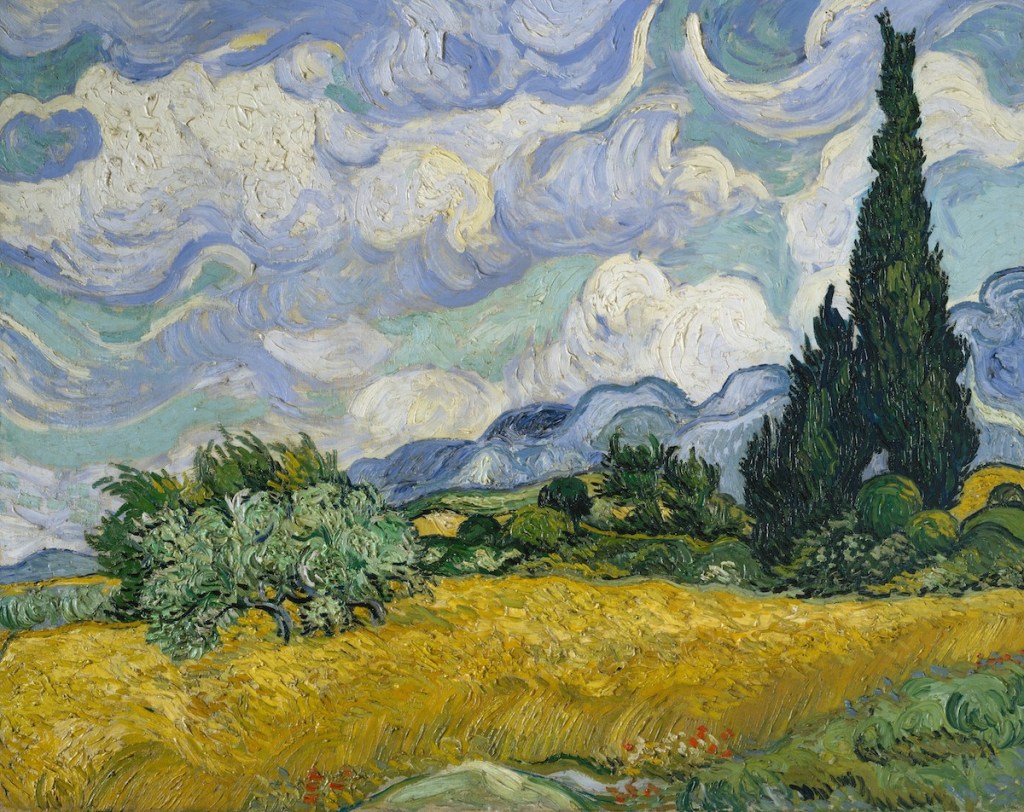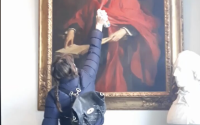Global Art Sales Dropped 4 Percent to $65 B. in 2023, Per Art Basel UBS Report
The global art market navigated a challenging year in 2023. Auction sales were down on both sides of the Atlantic and there was a conspicuous lack of marquee estates on the block. But, 2023 saw only a 4 percent decrease in market value to an estimated $65 billion, according to the annual art market report published by Art Basel and UBS. That number, however, is still greater than the report’s pre-pandemic estimate for 2019 of $64.4 billion.
Economist Clare McAndrew, who authored the report, attributed the decline to various factors, including high interest rates, inflationary pressures, and geopolitical instability, all of which contributed to a slowdown in sales, particularly at the top end of the market (artworks that sell for $10 million or more).
“It was inevitable that things would slow down a little bit considering how remarkable the post-Covid bounce back was,” McAndrew told ARTnews. “But you don’t need a lot of those $50 million–$100 million plus sales to make a big difference. They do put a big dent in it both ways. Luckily, this isn’t a dramatic contraction of the sort we saw in 2014 or 2009. This is a much more normal, more natural dip that reflects the context of the time.”
Apart from fewer sales in eight and nine figure last year McAndrew said the rising costs of doing business posed a significant challenge in 2023. The increasingly high interest rates that affected collectors’ purchasing power at the top level also caused dealers to shift focus from sales to profitability and from expansion to sustainability.
Examining regional dynamics, the report found that the United States held on to its position as the leading global art market, accounting for 42 percent of sales by value, though it experienced a 3 percent decline year-on-year. Unsurprisingly, China surpassed the UK to become the world’s second-largest market, with a 19-percent share. Sales in China increased by 9 percent to an estimated $12.2 billion, bolsters by relaxed Covid-19 restrictions in the country, a bourgeoning auction scene flush with inventory from postponed sales, and the launch of several new art fairs across Asia.
Meanwhile, the UK fell to third place with a 17-percent share of the market with sales having decreased by 8 percent to $10.9 billion in 2023. According to the report, the country’s declining global position is likely due to the sharp decline in high-value evening sales, which have historically been reserved for auctions in London and New York, as well as France’s 7-percent share of global sales, ranking it at fourth place.
The US art market, which reached a historical peak of $30.2 billion in 2022, witnessed a 10 percent decline to $27.2 billion in 2023. Despite this contraction, the US remained a key center for high-value sales, but they came in slightly below pre-pandemic levels in 2019.
“Although down year-on-year, core collecting audiences remained actively engaged with the art market in 2023 and helped support prices on balance – albeit through a more value-driven and quality-conscious lens,” Noah Horowitz, Art Basel’s chief executive, said in a press release.
That focus on quality was clear in one of last year’s most watched sales at auction: Agnes Martin’s Grey Stone II (1961). The sale, which took place during Sotheby’s Emily Fisher Landau sale in New York in November, made clear that, while collectors were holding their wallets tighter than they had been in preceding years, the right work could still fetch an astounding price. Unsurprisingly, public auction sales declined by seven percent to $25.1 billion, with a substantial decrease in high-value lots, offset by growth in middle- and lower-priced works.
“Overall,” Horowitz said, “the reversal of trend at the high end of the market after years of compounded acceleration was one of the defining features of the art business last year, as it also creates an opening in the market for exciting new trends and narratives to emerge.”
The report revealed a slowdown in dealer sales by 3 percent to $36.1 billion last year, but, like the auction market, there was a reversal of roles. Smaller dealers (defined as having an annual revenue of less than $500,000 per year) experienced an 11-percent increase in average sales, while larger dealers ($10 million or more in revenue per year) saw a decline by seven percent, a sign that reflects a change in collector behavior.
Art fairs accounted for 29 percent of dealer revenues, down six percent from 2022 but 27 percent higher than the Covid-era low of 2021. Larger dealers, the report says, are optimistic about 2024 with 50 percent expecting their sales at art fairs to increase, while across the financial spectrum only 39 percent of art dealers believe sales at fairs will increase.
Online sales experienced a seven percent increase to $11.8 billion, underscoring the growing importance of digital platforms in facilitating art transactions. Though the online art sales are technically down from a $13.3 billion high in 2021, they are still nearly double that of 2019 or any of the preceding years, and this year were especially driven by dealer-owned channels and websites, the report said. Despite the decline in sales of art-related non-fungible tokens (NFTs) outside the art market, the report noted continued interest in NFTs, with sales remaining significantly higher than pre-pandemic levels.
Looking ahead to 2024, the report says dealers on the whole expressed cautious optimism, with 36 percent anticipating increasing sales and only 16 percent foreseeing decline. Still, many dealers said the future looks rocky, with political and economic uncertainty looming over the market and the cost maintaining relationships with clients and participating in art fairs among the biggest concerns.



